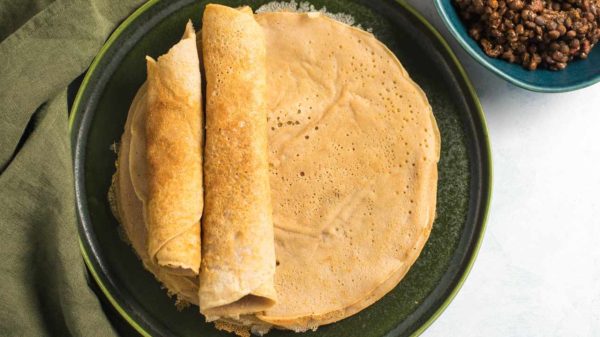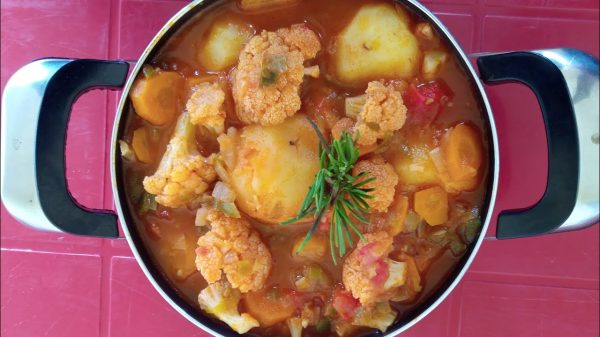Kenyan cuisine is a vibrant combination of flavors and influences, reflecting the country’s diverse cultures and history.
From the hearty staples that form the backbone of everyday meals to the aromatic dishes influenced by coastal trade and inland agriculture, Kenyan food offers a unique culinary adventure. Characterized by the use of fresh, local ingredients, including maize, beans, various green vegetables, and meats, Kenyan dishes are often simply prepared yet deeply satisfying. The communal aspect of eating is significant, with many meals shared from a common platter, fostering a sense of togetherness and warmth. Exploring Kenyan cuisine is not just about tasting new foods; it’s about experiencing the heart and soul of Kenyan culture.
1. Ugali
Ugali is the cornerstone of Kenyan cuisine, a dense maize flour porridge that serves as the primary accompaniment to many meals. Prepared by stirring maize flour into boiling water until it reaches a firm, dough-like consistency, ugali is traditionally eaten by hand, often molded into small balls used to scoop up vegetables, stews, or meats. Its neutral flavor makes it a perfect partner to robust dishes like sukuma wiki (collard greens) or nyama choma (grilled meat). Beyond its culinary role, ugali holds cultural significance, symbolizing sustenance and unity in communal dining experiences.
2. Nyama Choma
Translating to “grilled meat” in Swahili, nyama choma is more than a dish—it’s a social ritual. Typically featuring goat or beef, the meat is seasoned simply with salt and slow-roasted over open coals, resulting in tender, smoky morsels. Often served with kachumbari (a fresh tomato and onion salad) and ugali, nyama choma is a staple at gatherings, embodying the Kenyan spirit of community and celebration.
3. Githeri
Originating from the Kikuyu community, githeri is a wholesome one-pot meal combining boiled maize and beans. This nutritious blend can be enjoyed plain or enhanced with sautéed onions, tomatoes, and spices. Githeri’s simplicity and adaptability have made it a beloved comfort food across Kenya, often served in schools and households alike.
4. Irio (Mukimo)
5. Matoke
Matoke is a hearty stew made from green bananas, simmered with tomatoes, onions, garlic, and spices until tender. This dish, popular in western Kenya, showcases the versatility of plantains and is often served alongside rice, chapati, or ugali. Matoke’s rich flavors and comforting texture make it a cherished meal in many Kenyan households.
6. Sukuma Wiki
Literally meaning “push the week” in Swahili, sukuma wiki is a sautéed collard greens dish that helps stretch meals throughout the week. Cooked with onions, tomatoes, and spices, it’s a nutritious and affordable accompaniment to staples like ugali and rice. Sukuma wiki’s ubiquity across Kenyan tables underscores its role in daily sustenance.
7. Kuku Paka
A coastal delicacy, kuku paka is a creamy chicken curry infused with coconut milk, tomatoes, onions, and a blend of spices. The dish reflects the Indian and Arab influences along Kenya’s coast, resulting in a rich, aromatic meal often enjoyed with rice or chapati. Kuku paka’s fusion of flavors exemplifies the diverse culinary heritage of the region.
8. Mandazi
Mandazi are fluffy, triangular doughnuts flavored with coconut milk and cardamom, then deep-fried to golden perfection. Commonly enjoyed as a breakfast treat or snack, mandazi pairs wonderfully with chai tea. Their slightly sweet taste and soft texture make them a beloved indulgence across Kenya.
9. Mutura
Mutura is a traditional Kenyan sausage made by stuffing cow or goat intestines with a mixture of minced meat, blood, herbs, and spices. Grilled over open flames, mutura boasts a smoky flavor and a unique, rich taste. Often sold by street vendors, it’s a popular snack enjoyed with a sprinkle of salt and kachumbari.
10. Pilau
Pilau is a spiced rice dish cooked with meat, such as beef or chicken, and a blend of aromatic spices like cumin, cardamom, and cloves. Originating from the coastal regions, pilau is a festive dish often served at celebrations and gatherings. Its rich flavors and enticing aroma make it a centerpiece of Kenyan culinary traditions.
Subscribe to our Newsletter
Stay updated with the latest trends in African Pop Culture!

























